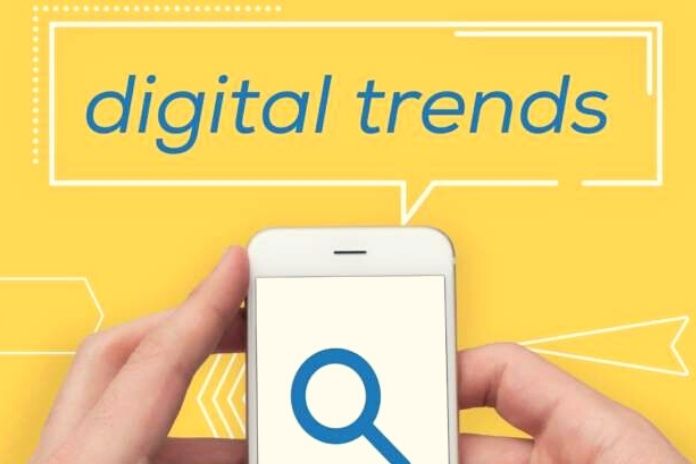Whether it is an uncertain economic outlook, protection against cyber-attacks, or home office: the consequences of the COVID-19 pandemic will continue to concern medium-sized companies in 2021. That is why decision-makers have to invest sustainably in the digital transformation of their companies and plan their IT budgets carefully and use them productively. You should keep these five digital topics in mind.
New Work: Still Working Flexibly Tomorrow
During the first lockdown last spring, many companies installed home office workstations and remote infrastructures at short notice to continue working productively. In the course of the subsequent relaxation, hybrid working environments were established in many offices. Employees increasingly vary whether they work on-site in the home office or with mobile devices while on the move.
Video conferences replace face-to-face meetings. Collaboration platforms such as Microsoft Teams enable location-independent internal and external collaboration. In 2021, the structures created for “Work Anywhere” need to be further stabilized and expediently expanded. For medium-sized companies, the following questions arise about the digital workplace: Do technical equipment and processes already fit together?
Are all employees informed about and open to a new work culture? Are there any tools that can be used to improve collaboration further? Have legal issues such as occupational safety and data protection been clarified in the home office as well?
SAP S / 4HANA: Springboard For Innovation
SAP has extended the maintenance of the previous version of SAP S / 4HANA until 2027, optionally even until 2030. But companies shouldn’t put off switching to the current SAP world. Why? Because SAP S / 4HANA serves as a springboard for innovations. Almost 50 percent of the SAP customers surveyed are accelerating their S / 4HANA projects or are consistently pursuing them.
In this way, you can modernize your core processes and take new digital paths: With the on-board tools of SAP S / 4HANA, such as data analytics, medium-sized companies can manage increasing amounts of data and evaluate them sensibly. The knowledge and forecasts will help them set up new business models in 2021 or develop their digital platforms and ecosystems.
Customer Experience: Digital Branches Conquer Retail
Who can open, who has to close? The stationary retail trade had been anything but easy in the past year. This year, too, the pandemic will determine opening times as well as supply and demand. With special incentives, retailers can retain their customers even in uncertain times. In 2021, digital branches will support them in bringing together online and offline retail and designing the point of sale (POS) for the future.
Mobile payment and sensors in the waiting area, for example, optimize checkout operations and shorten waiting times. With intelligent solutions such as the Store Butler, the price tags in all branches can be centrally controlled at any time. The advantages: always correctly labeled goods without laborious manual detail work, flexible price adjustments, and local offers that can be presented to end customers within a few seconds.
Cloud Computing: More Productive With The Hybrid Cloud
Why commit to a cloud when you can choose the best from numerous as-a-service models? In 2021, more and more medium-sized companies will discover the hybrid cloud for themselves. The trend can no longer be stopped: 32 percent of companies with 20 or more employees rely on hybrid cloud, and 87 percent for companies with 2,000 or more employees.
Above all, container solutions play into the cards of the hybrid cloud. This means that cloud services can be carried out quickly and easily – regardless of the cloud infrastructure. The Cloud flight analysts also see particular software frameworks such as Google’s Anthos or Microsoft’s Azure Arc as pioneers for multiple cloud landscapes. The open web platforms enable companies to manage their hybrid environments much more quickly than before.
Cybersecurity: Ever Shorter But More Violent Cyber Attacks
Remote workplaces and hybrid cloud structures or the increasing number of devices at the point of sale: all of this offers new gateways for cyber attacks. This year, too, we will not be spared news of ransomware attacks on hospitals, identity theft in e-commerce, or DDoS attacks on critical infrastructures. Ransomware attackers, in particular, are constantly refining their tactics, techniques, and procedures to extort high ransom money from companies.
The trend: Cyber attacks are getting shorter, but more and more sophisticated, more massive – and thus more challenging to fend off. The pandemic, in particular, enables cybercriminals to specifically exploit vulnerabilities, for example, for targeted phishing and malware attacks. For 2021, this means that companies must make their cybersecurity as broad as possible to protect themselves against the many facets of cybercrime effectively.
Intelligent data security concepts help you with this. Designed as all-around protection against data and image loss, they protect companies from economic damage. And release internal resources that can henceforth concentrate more on the core business.

